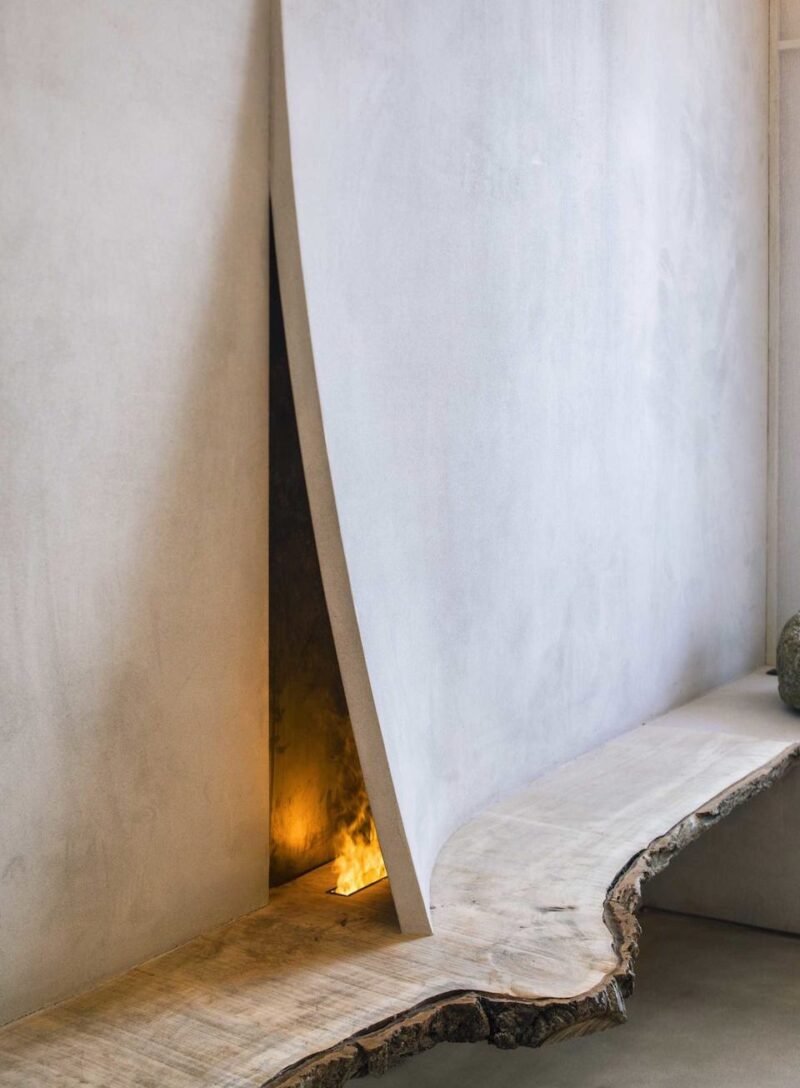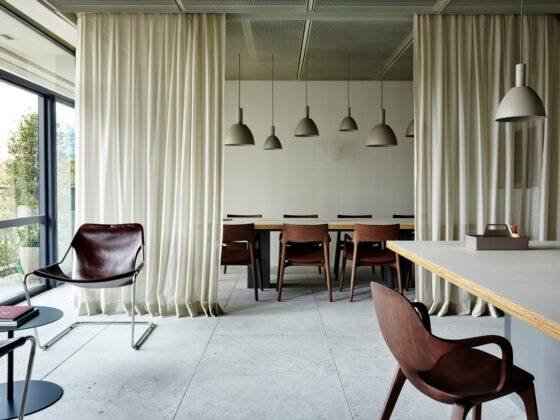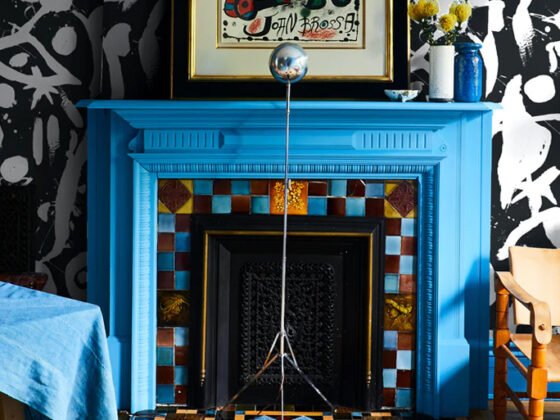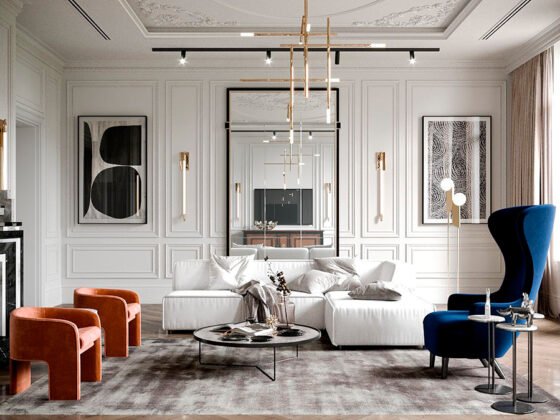In a world that often celebrates perfection and sleekness, there is a growing movement towards embracing the imperfect, the raw, and the natural. Wabi-sabi interior design, derived from ancient Japanese philosophy, offers a refreshing approach that celebrates the beauty found in simplicity, imperfection, and the passage of time. We will explore the essence of wabi-sabi, its historical roots, and how you can incorporate its principles to create a harmonious and serene living space.
Wabi-sabi is more than just a design trend, it is a way of life. It encourages us to find beauty in the imperfect and to appreciate the transient nature of things. Derived from Zen Buddhism, wabi-sabi values simplicity, authenticity, and the connection to the natural world. It embraces asymmetry, imperfection, and the patina that comes with age, celebrating the uniqueness and character that such qualities bring.
Let’s explore practical ways to incorporate its principles into interior:
Embrace Simplicity and Minimalism: Wabi-sabi seeks to create an uncluttered and serene environment. Spaces are kept simple, with a focus on essential elements. Clean lines and minimalist design principles guide the arrangement of furniture and decor, allowing room for contemplation and mindfulness. Clear the clutter and adopt a minimalist approach. Focus on essential elements and create a serene and uncluttered environment.
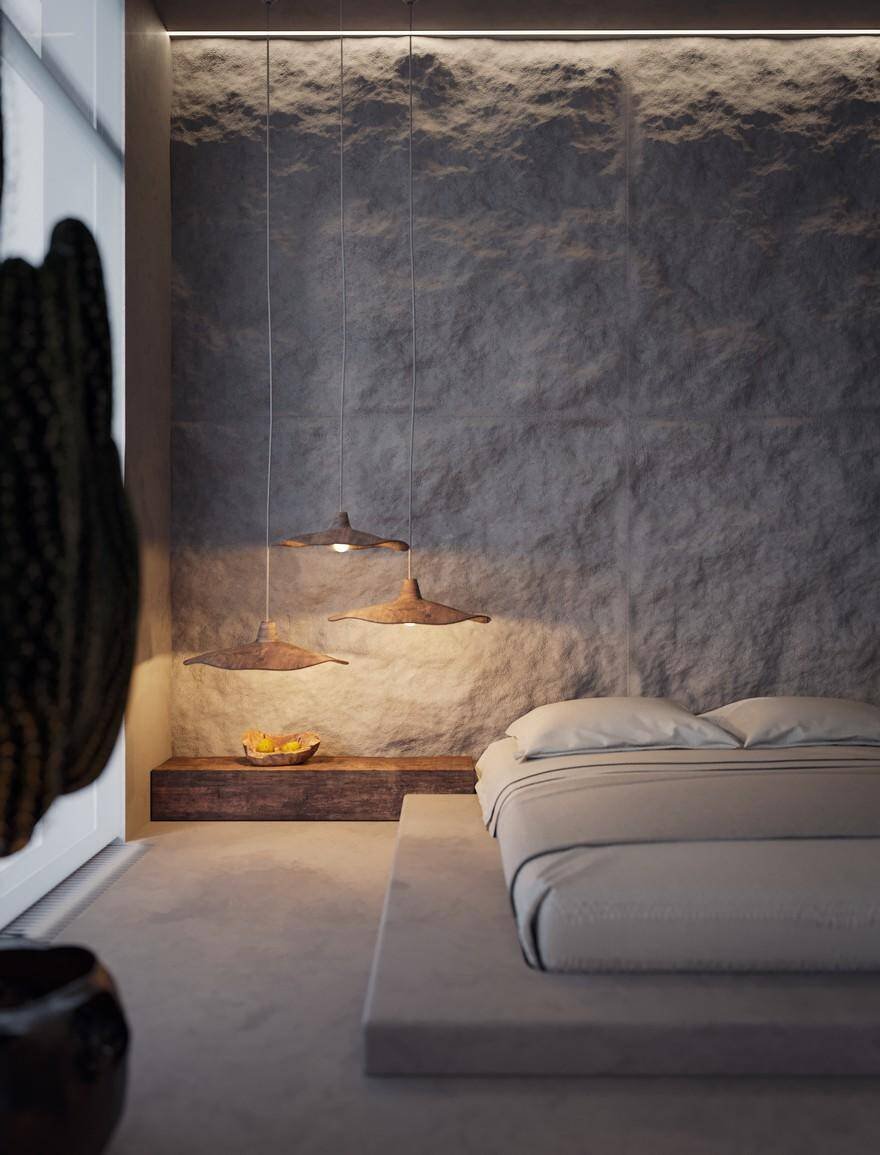
Imperfection and Asymmetry: Wabi-sabi appreciates the beauty found in imperfection and irregularity. Spaces are not overly manicured or perfectly symmetrical. Instead, they embrace the organic and asymmetrical qualities of nature, creating a sense of authenticity and harmony. Celebrate the imperfections in objects and materials. Allow the cracks, knots, and irregularities to be visible, reminding us of the beauty found in authenticity. Instead of hiding them, celebrate the unique character they bring. Let antique furniture show its patina, display handmade ceramics with their irregularities, and cherish the charm of weathered objects.
Natural Materials: Wabi-sabi embraces the use of natural materials that reflect the beauty of the organic world. This includes materials such as wood, stone, bamboo, rattan, and clay. Unfinished or raw surfaces, with their natural textures and imperfections, are favored over polished or mass-produced materials. Opt for natural materials, incorporate them into your furniture, flooring, and decor, allowing their textures and imperfections to shine through.
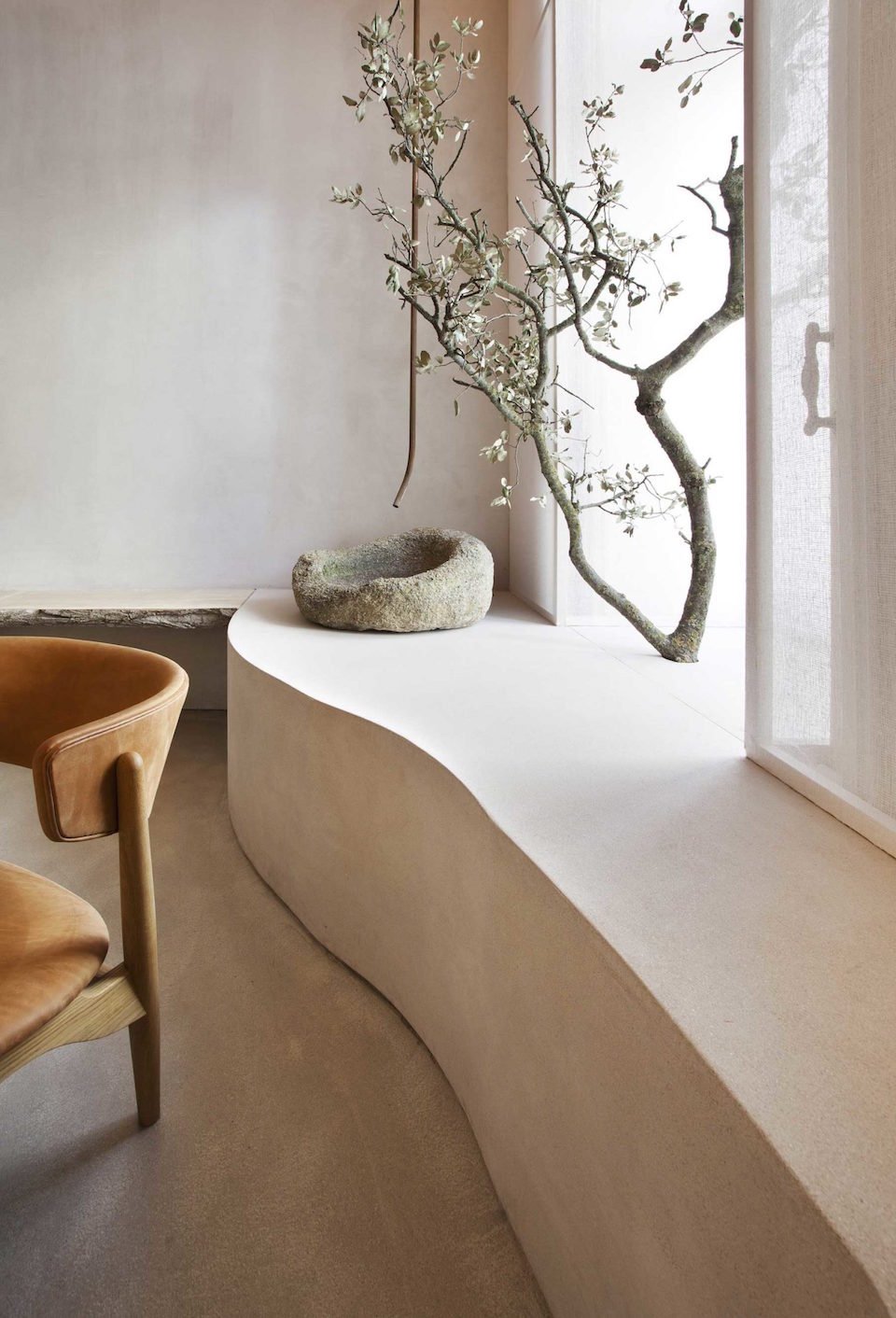
Patina and Aging: Wabi-sabi values the beauty that emerges over time through wear, weathering, and aging. The signs of use and age, such as worn wooden floors or antique furniture with visible patina, are celebrated as they tell stories and add character to the space. Embrace the beauty of objects that age gracefully. Antique furniture with visible patina, worn wooden floors, and weathered textiles add character and tell stories within your space.

Muted Color Palette: Wabi-sabi interiors often feature a natural and subdued color palette. Earthy tones, such as soft grays, warm browns, muted greens, and dusty blues, are commonly used. These colors create a calming and grounding atmosphere, connecting the space to the natural world. Choose a subdued and earthy color palette inspired by nature, create a calming and grounding atmosphere.
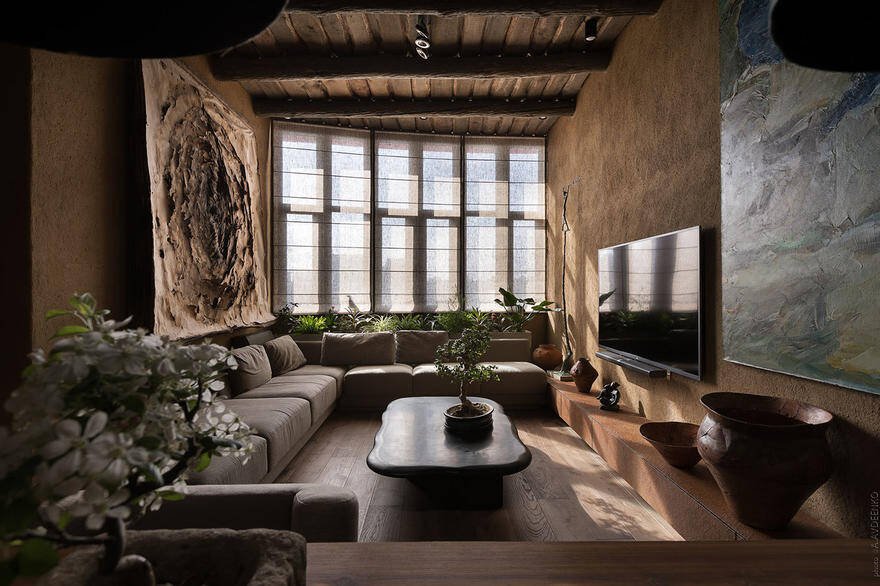
Mindful Arrangement: Arrange furniture and decor with intention. Avoid overly symmetrical layouts and embrace asymmetry, creating a more organic and natural flow in your space.
Textures and Tactility: Wabi-sabi design places great emphasis on texture and the tactile experience. Rough-hewn surfaces, woven textiles, handmade ceramics, and other objects with a sense of touch are valued for their ability to evoke a deeper connection and engagement with the space. Add tactile elements to your space. Incorporate textured textiles like linen, burlap, or handwoven fabrics. Introduce rough-hewn surfaces, such as exposed brick or natural stone walls, to create visual interest and a sense of depth. These tactile experiences engage the senses and add depth to your surroundings.
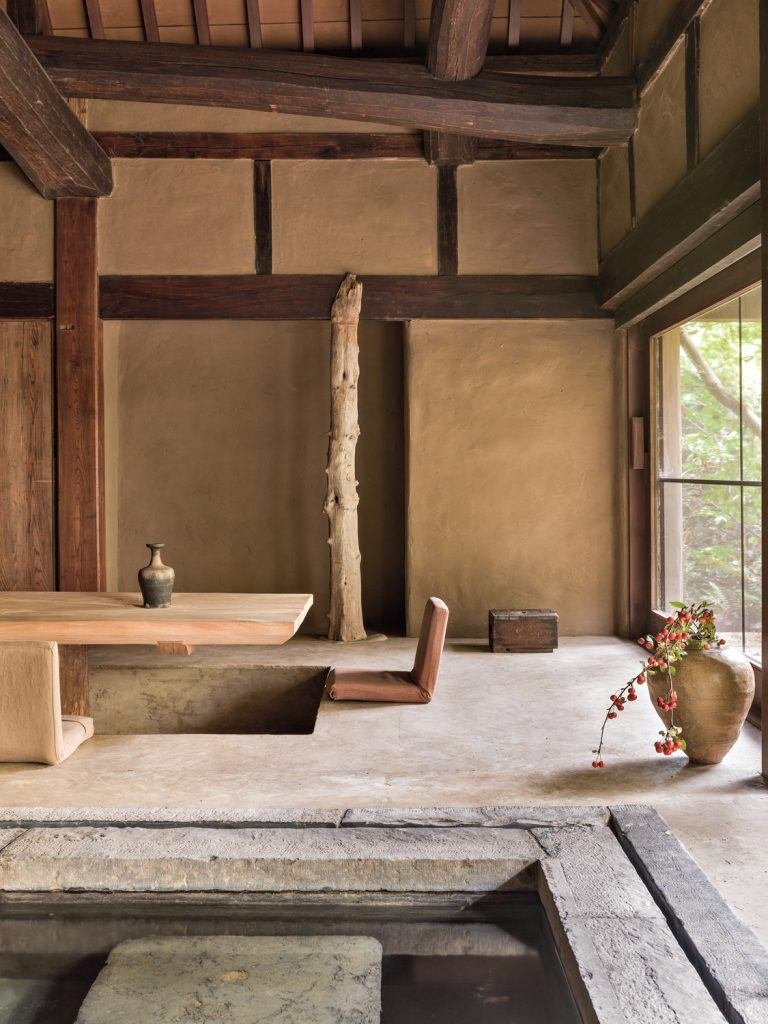
Connection to Nature: Wabi-sabi seeks to foster a strong connection with the natural world. Views of nature, such as large windows overlooking gardens or indoor plants, are incorporated to bring the outdoors inside. The use of natural elements, such as stones or branches as decorative objects, further enhances this connection. Place potted plants strategically to create a sense of tranquility and freshness. Decorate with branches, dried flowers, or seashells to foster a connection with the outdoors.
Intentional Use of Light and Shadow: Wabi-sabi embraces the play of light and shadow to create depth and ambiance. Soft and diffused lighting, natural light sources, and carefully placed fixtures enhance the atmosphere and highlight the textures and imperfections within the space. Maximize natural light by using sheer curtains or blinds that allow sunlight to filter through. When artificial lighting is needed, opt for soft and warm lighting sources, such as paper lanterns or diffused fixtures, to create a cozy and inviting atmosphere.
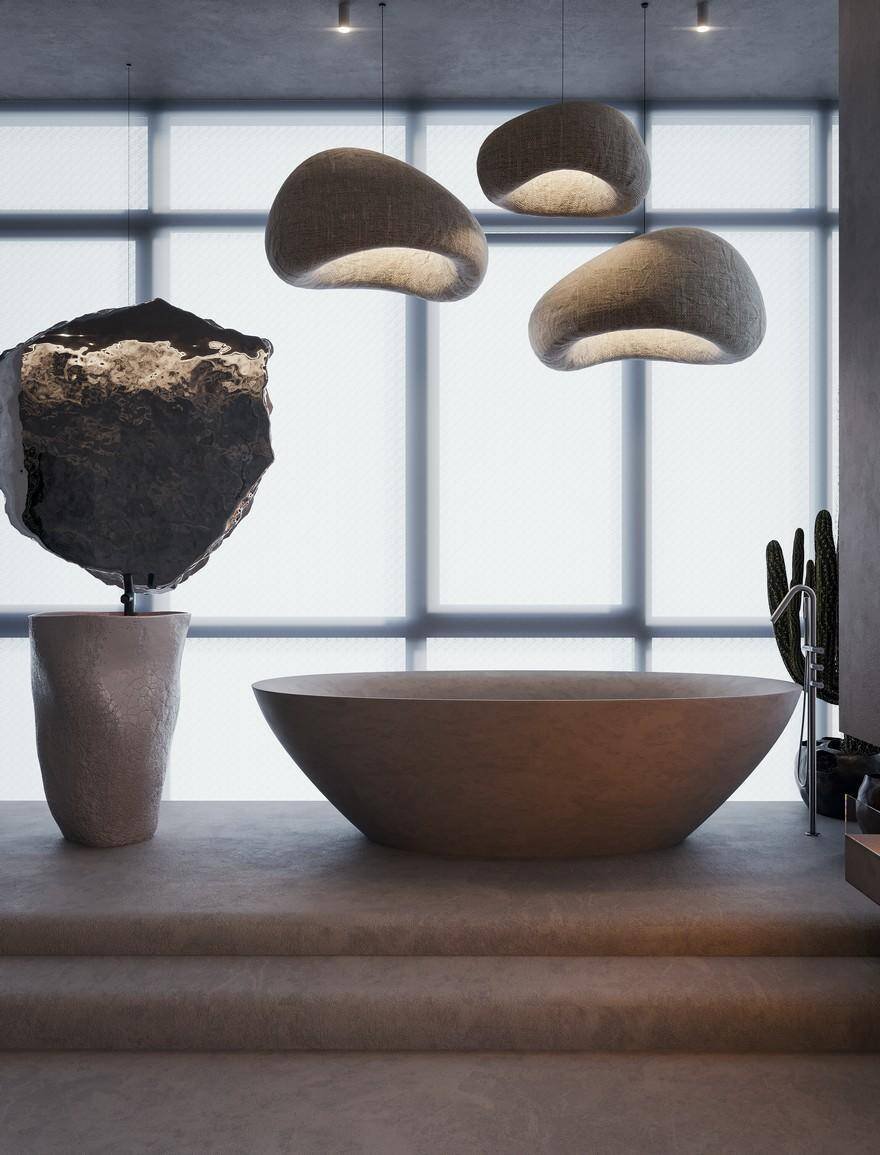
Handcrafted and Meaningful Objects: In wabi-sabi interior design, handcrafted and meaningful objects play a significant role in creating a sense of authenticity, connection, and personal narrative within a space. Display handcrafted items and objects that hold personal meaning to you. Choose handmade ceramics, artwork, or heirloom pieces that evoke a sense of nostalgia and authenticity
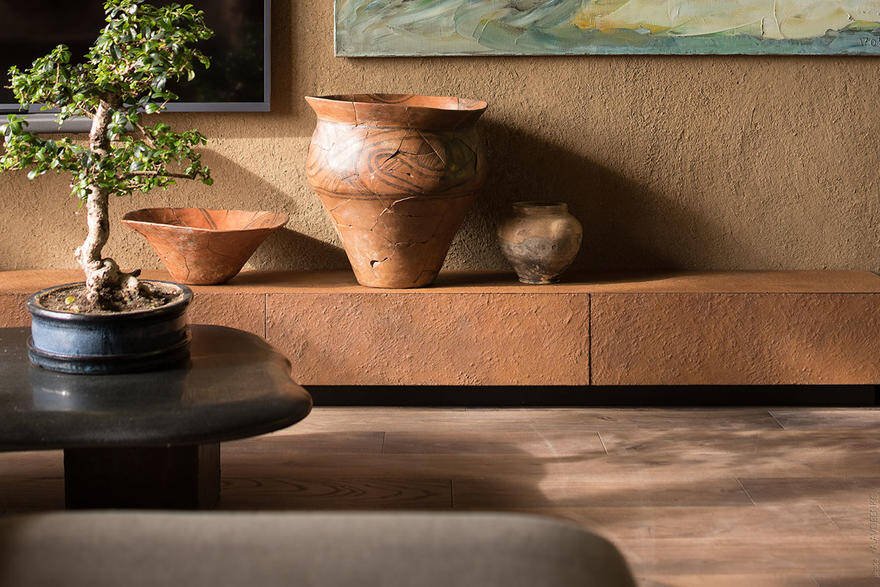
Wabi-sabi interior design offers a refreshing and soul-nourishing approach to creating a living space. By embracing simplicity, imperfection, and a connection to the natural world, we can cultivate a serene and harmonious environment that reflects our appreciation for the transient beauty of life. So, let go of the pursuit of perfection and embark on a wabi-sabi journey, finding beauty in imperfection and embracing the simple joys that surround us.
Remember, wabi-sabi is not a rigid set of rules but a guiding principle to inspire and nurture your own unique expression. Embrace the wabi-sabi spirit and discover the extraordinary within the ordinary.

